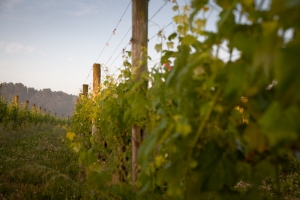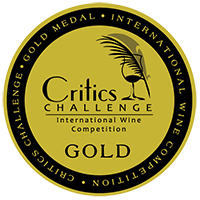“Musings” are a series of columns by co-founder and co-owner Robert Muse that are devoted to viticulture and wine making at Muse Vineyards
Our Viticulture, or How We Farm Wine Grapes: An Introduction
 Muse wines are made from grapes grown on thirty acres of contiguous vineyards, each with a distinctly different soil type. The predominant soil types are shale, sandy alluvial river, and thin loam over stony red clay. We dry-farm (no irrigation) while maintaining sufficient ground cover to ensure good rainwater absorption which contributes to earlier and fuller grape ripening because slight drought-stress in grapevines advances fruit maturation. Basically, late season shortage of water startles vines thinking about propagation, which depends upon the production of attractively sweet fruit for foraging birds to consume and deposit as fertilized seeds. Grapevines, you see, produce lush, ripe grapes for the delectation of starlings rather than wine lovers.
Muse wines are made from grapes grown on thirty acres of contiguous vineyards, each with a distinctly different soil type. The predominant soil types are shale, sandy alluvial river, and thin loam over stony red clay. We dry-farm (no irrigation) while maintaining sufficient ground cover to ensure good rainwater absorption which contributes to earlier and fuller grape ripening because slight drought-stress in grapevines advances fruit maturation. Basically, late season shortage of water startles vines thinking about propagation, which depends upon the production of attractively sweet fruit for foraging birds to consume and deposit as fertilized seeds. Grapevines, you see, produce lush, ripe grapes for the delectation of starlings rather than wine lovers.
We do debudding, shoot-thinning and harvesting by hand. Where possible we use organic fungicides and employ systemics as little as possible. Hedging has been reduced to encourage greater vertical leaf surface to promote photosynthesis and therefore stronger vines in both productive and dormant seasons. We dislike, by the way, the “suffering wines are required to make great wine” canard. Strong vines produce better, more evenly ripened fruit and tolerate cold winters better.
We are pleased to report that earthworms returned a few years ago to our vineyards. They’d departed when the land was monoculturally farmed with nitrate fertilizer supplements, extensive discing and other assaults on the equilibrium of the soil.
In future columns I will expand upon the topics introduced above; for example, we will explore the concept of grape ripeness in winemaking, something that depends only partially on sugar accumulation as we discuss the roles of acidity balance and structure in premium wines.
Robert Muse






